Whether you are a seasoned construction worker or a newbie on the job, there’s one thing we can all agree upon - nothing dampens the spirit like working under the relentless downpour. It's not merely about comfort, but safety, efficiency, and maintaining a steady work pace irrespective of the elements. The right rain gear can make a significant difference, turning a difficult work day into something manageable.
In this man-versus-nature scenario, your armor of choice is the rain gear that keeps you dry while you labor industriously in the construction site. Navigating the wide variety of options can be intimidating, thanks to the diverse range of materials, designs, and technical jargon associated with these apparels. Not to worry - we are here to crack the code for you, so you can get back to work with the suitably matched rain gear for your work conditions.
In the following sections, we delve into the myriad factors to consider when choosing rain gear, the types available to you, the materials to keep an eye out for, and even the nitty-gritty on waterproofness. Keep reading to arm yourself with knowledge that will keep you high and dry on the job!
Factors to Consider When Choosing Rain Gear
Choosing the right rain gear is more important than most people think. Whether you're an adventurous hiker bracing against torrential rains or a construction worker ensuring work continuity amidst unpredictable weather, investing in high-quality rain gear can make all the difference. Effective rain gear should protect you from harsh elements, without sacrificing comfort and ease of movement. Let's explore some critical factors you should consider when selecting your optimal rain gear.
1. Price
Often, when choosing rain gear, people tend to look for the most economical option. However, one must remember that quality often comes at a price. High-quality rain gear might demand a higher initial investment, but they offer better protection and generally lasts longer. While shopping for your rain gear, balance your budget constraints with the need for quality and durability.
2. Durability
Our rain gear should be a reliable line of defense against wind and rain. The durability of the gear depends significantly on the materials used during manufacturing. Some materials are naturally more resistant to wear and tear than others. To ensure the durability of your gear, opt for products made with sturdy, tear-resistant materials that can withstand harsh weather conditions.
3. Visibility
Visibility might not seem like a crucial factor, but it most certainly is—especially if you're working in low-light conditions or foggy environment. For instance, the best rain gear for construction work often comes with reflective strips or bright colors for increased visibility. This ensures workers remain visible to each other, reducing the chances of accidents significantly.
Choosing the right rain gear can make a world of difference in how you navigate through wet, windy, or icy conditions. Always remember, the most effective rain gear balances cost, durability, and visibility to suit your personal or professional needs seamlessly. No one size, style, or type fits all, so explore various options before making a choice.
Types of Rain Gear for Construction Work
Working outdoors comes with its fair share of difficulties. While most of us worry about excessive sun exposure, construction workers may need to consider heavy rainfall as a part of their occupational hazards. However, thanks to advancements in weather-based apparel technology, there's a solution to remain productive while working in the rain – discovering the right rain gear! Let's delve into the different types of rain gear, specifically for construction work.
Rain Jackets
Rain jackets are an essential component of any construction worker's wardrobe. The perfect rain jacket serves dual purposes: it should keep you dry while also being breathable enough to prevent sweat and discomfort.
Here are some features to look for in a good rain jacket:
- Waterproof Rating: Jackets labelled “waterproof” should keep you dry in even the heaviest rain.
- Durability: Construction work is rough, and you'll need a jacket that can handle it. Look for high-durability material.
- Breathability: Your jacket should allow sufficient air circulation to prevent overheating.
- Insulation: Jackets with insulation will keep you warm in cooler weather.
Whether you're an experienced construction worker or a novice just starting, quality rain jackets prove invaluable, enabling you to work through rainy conditions with relative ease.
Long Raincoats
While rain jackets do a good job at guarding the upper body, they might not be enough for torrential downpours or chilly wind gusts. This is where long raincoats take the stage. Offering full-body coverage, they typically extend down to the wearer's knees or even lower. This additional protection can be a blessing in disguise, especially when dealing with heavy rain or cold temperatures. A long raincoat gives you the edge of staying dry from top to bottom, making it a solid choice for construction work.
Rain Pants
Last on our list, but certainly not least, are rain pants. Similar to the aforementioned garments, rain pants are built to withstand the harsh environment of a typical construction site. They should be fully waterproof and highly visible to ensure safety. Many models also feature side access pockets and adjustable waistbands for added convenience.
Coupled with a sturdy rain jacket or long coat, rain pants can offer comprehensive protection against unrelenting downpours, enabling construction workers to perform at their best, regardless of the weather.
Choosing the right rain gear is an investment in safety and productivity. Explore for the perfect Types of Rain Gear that meet your requirement, weather, and the nature of the construction work. When appropriately equipped, neither rain nor shine can stop you from doing your best at the construction site.
Material Considerations for Rain Gear
When it comes to weathering the storm, your clothing material can be your greatest ally. Enter the world of rain gear essentials, where choosing the right materials can make the difference between staying dry and comfortable or dealing with discomfort and annoyance. Among the many rain gear options, three key features contribute significantly to your ultimate weather protection: polyester outershells, synthetic insulation, and high-visibility (hi-vis) reflective elements.
Polyester Outershells
Polyester outershells are the unsung heroes of rain gear material. Their popularity in creating gear that keeps you dry has much to do with polyester's hydrophobic nature. This attribute makes it a quick-drying material, so instead of soaking up rainwater, it shakes it off. The swift drying characteristic of polyester means you spend less time in wet, heavy gear—an underrated luxury during a downpour. For more classification about durable rain gear for construction workers, visit our guide on Material Considerations for Rain Gear.
Synthetic Insulation
Apart from staying dry, feeling warm and comfy in your rain gear is equally essential. Synthetic insulation steps up to this task effortlessly. Unlike traditional cotton or down, synthetic insulation materials don't lose much of their insulating power when wet. This feature ensures that you stay warm and snug even when rain surprises you. Over time, the insulating power adds up to a lot of comfort and warmth, particularly if you're dealing with rainy weather regularly.
Hi-Vis Reflective Elements
Now, let's talk safety. Imagine a rainy day on an outdoor work site or a dark stormy evening along the roadside. Low visibility can pose serious safety concerns. Strategically placed hi-vis reflective elements in your rain gear can increase your visibility in such situations and alert others to your presence. Furthermore, these elements don't compromise the comfort, warmth, or dryness levels of your rain gear. In fact, they simply add an extra layer of safety while you keep your focus on the task at hand.
To sum up, selecting the right material for your rain gear can keep you dry, warm, and safe. Paying attention to these three key elements—polyester outershells, synthetic insulation, and hi-vis reflective elements—can truly enhance your experience when you encounter rain, ensuring you stay comfortable and protected under any conditions.
Waterproofness of Construction Rain Gear
Are those ominous, grey clouds gathering in the sky making you nervous about your construction project? Fear not, for the right rain gear can keep you and your team dry and working efficiently, come rain or flood. The trick lies in understanding the waterproofness of the gear you choose and matching it with your needs.
Water-Resistant vs Waterproof
You might come across terms like 'water-resistant' and 'waterproof' when shopping for rain gear. But do you know what they really mean, and which is more suitable for your needs?
- Water-resistant gear is designed to resist water to some extent, but not entirely. They are suitable for light drizzles but may not keep you dry during a downpour. Therefore, if you're working in a location where the weather is often mild, water-resistant gear might suffice.
- However, if you are expecting heavy rain, switching to waterproof gear is highly recommended. This gear is meticulously crafted to prevent water from seeping in.
So, when choosing between water-resistant and waterproof gear, always consider the weather conditions.
Breathable Membranes
Another key factor in choosing rain gear is ensuring its breathability. Breathability not only impacts comfort but also significantly enhances protection in the rain.
Rain gear made from a breathable membrane has microscopic pores that are larger than a moisture vapor molecule but smaller than a water droplet. This means sweat can exit while rain cannot enter, providing comfort and protection in extended rain or while working hard.
Waterproof Ratings
When venturing into heavy rain or wet conditions, gear with high waterproof ratings is your team's best ally. These ratings usually range from 1,500mm to up to 20,000mm, with the higher the number, the more waterproof the garment is.
In essence, understanding the technicalities, such as the difference between 'water-resistant' and 'waterproof', the importance of breathable membranes, and the implication of waterproof ratings, can help you choose the most suitable construction rain gear. Furthermore, arming yourself with this knowledge improves the longevity and efficiency of your gear, ultimately protecting your onsite productivity from the rainy weather.
For more comprehensive information about choosing suitable rain gear, refer to our Guide to Waterproof Gear.
Comfort and Mobility in Construction Rain Gear
When you're on a construction site, you know as well as anyone that rain or shine, the work has to go on. That said, it's essential to be equipped with suitable rain gear that doesn't compromise on comfort or mobility. Experts suggest paying attention to three essential factors when choosing construction rain gear: comfort, fit, and durability.
Comfort
Comfort is paramount when selecting rain gear. You might need to wear it for long stretches of time, and uncomfortable gear could hinder your ability to work. Look for materials that are not only waterproof but also allow your body to breathe. For instance, rain gear crafted from modern breathable fabrics lets moisture escape from inside while keeping outside rain from getting in.
Fit
A well-fitted rain gear set is your next consideration. A snug fit ensures unhampered movement and lets you carry on your tasks seamlessly. Too tight, and it restricts motion; too loose, and it could snag on equipment or machinery. Additionally, various designs cater to specific tasks – full-length coats for heavy rain, jackets and trousers for lighter showers or where mobility is more important.
Durability
Your rain gear will see its fair share of rough use in a construction setting. Therefore, durability is a key factor. You should look for gear with reinforced seams and rugged materials like PVC-coated polyester or nylon, known for their resilience against wear and tear.
When choosing your construction rain gear, understanding materials and styles can help you make a better choice. Having the right gear that balances comfort and mobility without compromising on durability will ensure that getting your job done doesn't have to be a struggle, even in evident non-stop drizzle or relentless rain. Remember, the right construction rain gear is one that doesn't just shield you from the elements but also fits well and lasts long. So, take your time and select the one that perfectly suits your workflow.
Fabric Treatment in Rain Gear
The advent of rainy weather brings with it the inevitable necessity for adequate protection. The exponential evolution of textile technology has made this a lot easier than it used to be, thanks to fabric treatments that offer excellent defense against the elements. Critical interventions such as Rain Defender and Storm Blocker lend your rain gear the required armor to battle the relentless downpour effectively. Let's delve into the specifics of both these revolutionary treatments.
Rain Defender Coatings
Rain Defender is a potent fabric treatment that offers an unseen, yet highly competent, shield against rain. Coating your gear with this innovative treatment means that you're imparting unparalleled water resistance to the fabric. Hence, water droplets just bead up and roll off the surface without penetrating the fabric. Here's why the Rain Defender treatment is a game-changer:
- Durability: Unlike regular fabric treatments, Rain Defender ensures long-lasting protection. This durability stems from the fact that even after multiple washes, the fabric maintains its water-resistance.
- Breathability: While forming a formidable barrier against rain, the coating does not compromise on breathability. It allows air to permeate the fabric, providing comfortable wear all day long.
- Versatility: The great thing about Rain Defender is its excellent versatility. It works effectively on a variety of textiles, from cotton and wool to synthetic blends.
Storm Blocker Coatings
Equal in efficiency but unique in its attributes is the Storm Blocker fabric treatment. Similar to Rain Defender, it makes your rain gear impermeable, but with a few distinct differences:
- Wind Resistance: Storm Blocker just doesn't stop at rain; it takes it a step ahead by offering wind resistance, giving your gear an additional layer of protection against blustery weather conditions.
- Temperature Regulation: Besides blocking wind and rain, Storm Blocker also aids in temperature regulation. It helps maintain a comfortable body temperature by adjusting to various weather conditions.
- Odor Prevention: A genuinely standout feature of Storm Blocker is its ability to prevent undesirable odors by inhibiting the growth of bacteria and fungi. This is particularly handy for those prolonged rainy days when drying your gear becomes a challenge.
The choice between Rain Defender and Storm Blocker is often down to personal preference and specific usage needs. Both these fabric treatments present a robust proposition for those looking to brace the rain without compromising on comfort or style. With such treatments at your disposal, rain gear evolves from a mere necessity to an effective ally that takes on the rain, empowering you to go about your day uninterrupted. After all, why should a little downpour dampen your spirit?
Insulation for Cold Environment Workers
Biting winds. Subzero temperatures. Shivering bodies. All of these evoke a crisp image of working in cold environments. While it takes a special kind of resilience to withstand these conditions, the right gear, like the Insulation for Cold Workers, can make all the difference. Among the varied fabric options available for such demanding settings, one stands head and shoulders above the rest. Let's get into a little more detail about the hero of cold weather - wool.
Wool Fabrics
Wool isn't merely a fabric; it's an investment you make for your comfort, health, and productivity when working in frigid surroundings. But why exactly is wool considered the ultimate armor against the cold? Let's find out:
- Natural Insulator: Wool fibers have a unique structure that traps air, providing a layer of insulation to keep the body warm. In the harshest climates, this might be the difference between succumbing to hypothermia and managing to work comfortably.
- Moisture-Wicking Properties: Wool absorbs moisture from the skin and releases it into the air. This keeps the wearer dry, even during strenuous tasks, preventing dampness which often leads to chills.
- Durability: No matter how rugged the conditions, wool proves its mettle time and again. It's known to be highly resistant to wear and tear, making it an ideal fabric for those who need their gear to match their grit.
- Flame-resistant: Accidental fire hazards might be rare in cold conditions, but when these incidents occur, wool's natural flame resistance can offer a life-saving advantage.
No doubt, woollen fabric offers a myriad of benefits, making it an ideal choice for insulation against cold. So next time you find yourself working in cold environments, don't just put on any clothing; choose materials like wool that offer superior insulation, durability, and protection.
Remember, working in a cold environment requires more than just thick clothing; it calls for smart choices. And choosing wool for your insulation needs is undeniably one of the smartest decisions you can make! So sweat not, brave the cold, and get the job done in the best possible way with wool as your trusted ally.
Conclusion
In the demanding environs of a construction site, the right gear can mean the difference between staying safe and dry or facing a quite dreary day battling the elements. Those who work in these rigorous conditions know that there's much more than just price to consider when selecting rain gear. Durability, visibility, comfort, the materials used, and of course, the level of waterproofness are all crucial aspects to weigh.
When it comes to facing the challenges Mother Nature throws your way, Hurricane Raingear has all the answers, offering 100% waterproof and rip-resistant rain gear. Practicality meets style in their craftsmanship, boasting features such as breathable materials, enhanced visibility 3M striping, and durable constructions that ensure unrestricted movement.
Remember, your rain gear is your shield against the uncertain weather, your line of defense when the heavens open up, and your comfort on those misty mornings. So, make your choice count. With the right gear, you can ensure that neither rain, nor sleet, nor gloom of the overcast sky will keep you from accomplishing your duties with ease and comfort.
Frequently Asked Questions
-
What factors should I consider when choosing rain gear for construction work?
When choosing rain gear for construction work, consider factors such as waterproofing, durability, comfort, visibility, breathability, and functionality. Look for materials such as Gore-Tex or PVC, reinforced seams, adjustable cuffs and hems, reflective accents, ventilation options, and pockets for storage.
-
What types of rain gear are suitable for construction work?
Suitable rain gear for construction work includes waterproof jackets, pants, overalls, coveralls, rain boots, and hats. Opt for gear that provides full body coverage and is designed specifically for heavy-duty and outdoor use.
-
Are there any specific safety features to consider in rain gear for construction work?
Yes, safety features to consider in rain gear for construction work include reflective strips or accents for visibility in low-light conditions, bright or high-visibility colors, and non-slip soles on rain boots to prevent accidents on slippery surfaces.
-
How do I ensure the right fit for rain gear?
To ensure the right fit for rain gear, refer to the manufacturer's size chart and measure yourself accurately. It's recommended to choose slightly larger sizes to allow for easy movement and layering underneath the gear.
-
How can I maintain and prolong the lifespan of my rain gear?
To maintain and prolong the lifespan of your rain gear, follow the manufacturer's care instructions, which often include machine washing with mild detergent, avoiding harsh chemicals, periodic reproofing to maintain waterproofing, and proper storage in a dry and ventilated area.



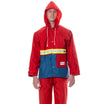
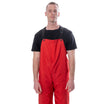
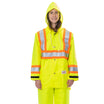
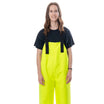
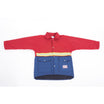
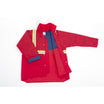

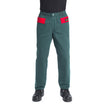
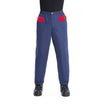
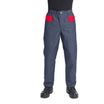
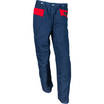
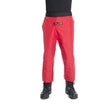
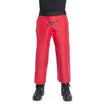
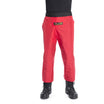
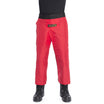
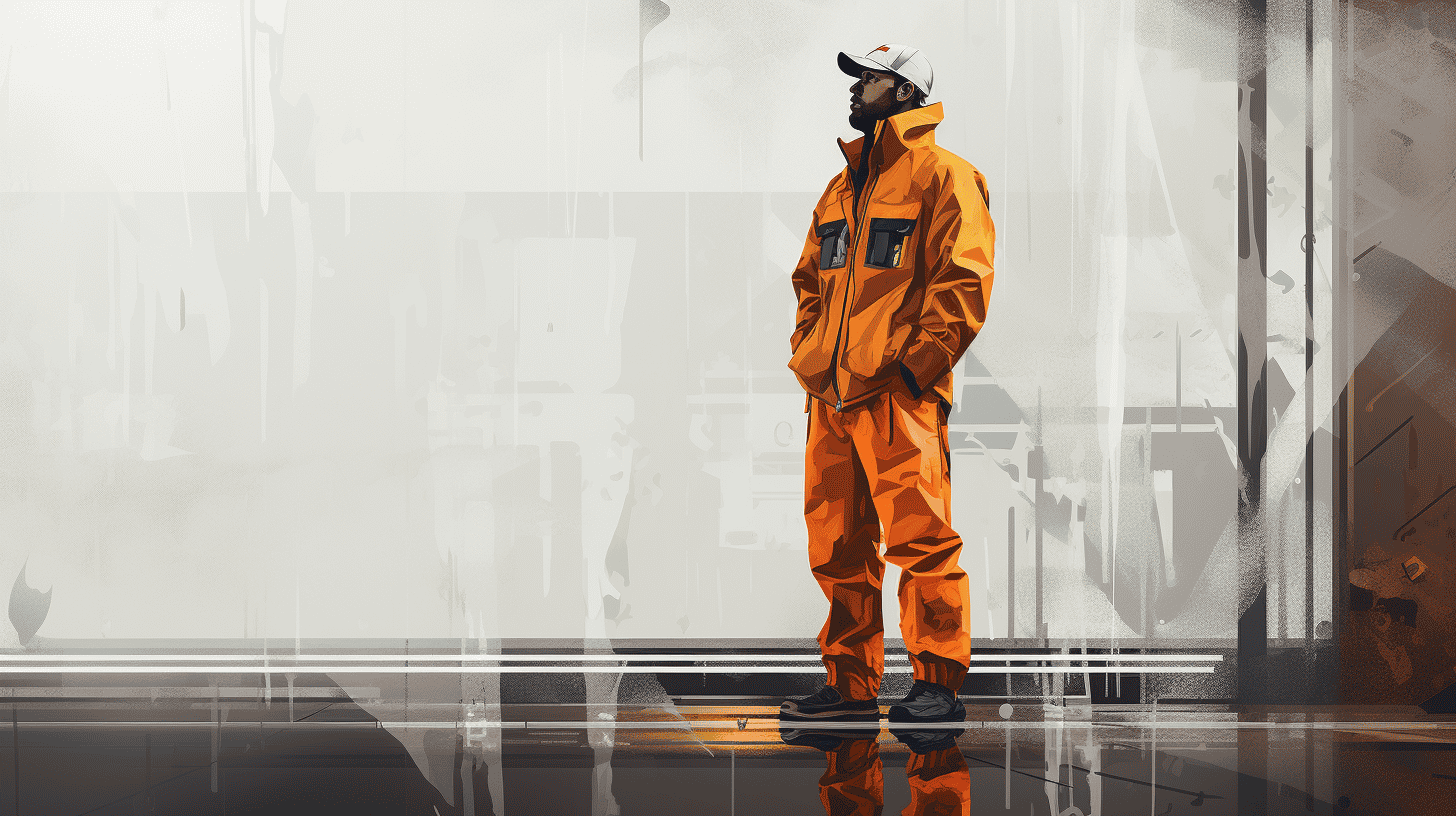

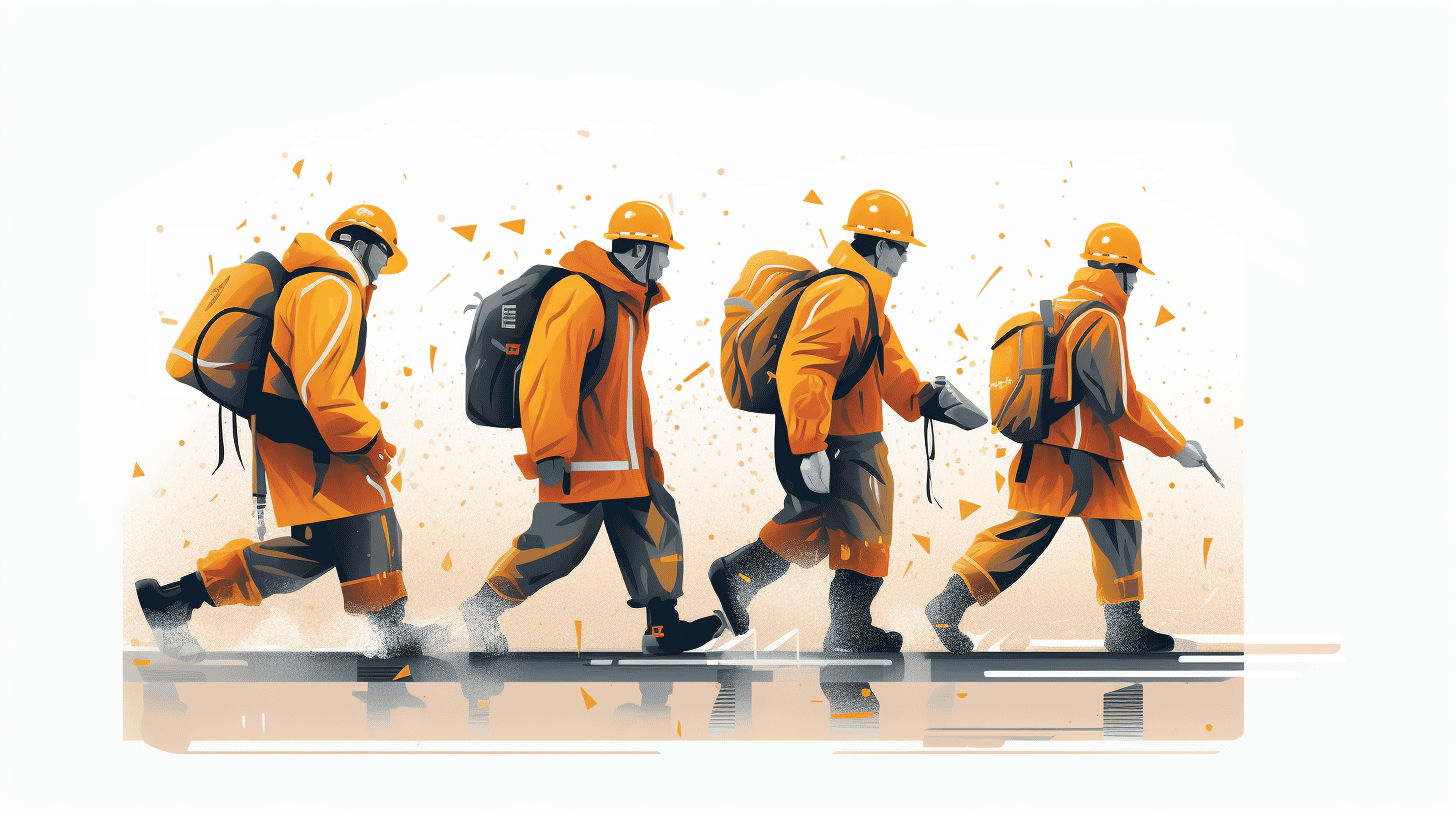
Leave a comment
This site is protected by hCaptcha and the hCaptcha Privacy Policy and Terms of Service apply.